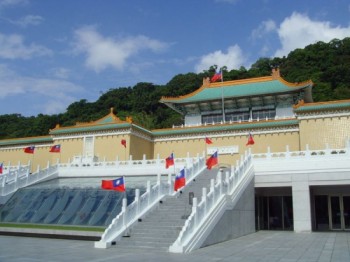Citywalk: Taipei
Taipei boasts a wide variety of scrumptious, regional Chinese cuisines and a few down-home specialties, all of which stem from the island's history.
Take one part local food tradition, which shares much with southeastern Chinese fare and favors fresh seafood, especially oysters. Add a strong dash of Japanese flavor (like wasabi), culled from 50 years of Japanese colonization that ended in 1945. Then mix in some of China's finest cooking traditions from Chongqing to Shenyang (think Sichuan-style gong bao ji ding -- kungpao chicken -- and northern China-style beef noodle soup) brought here by the Mandarin-speaking Kuomintang elite when they fled the mainland, along with their cooks, in the late 1940s. The result: contemporary Taiwanese food.
For a city with a reputation among some foodies for having some of the world's best Chinese food, an eating tour of Taipei is highly appropriate. But it's not for the faint of heart, or small of stomach.
In fact, were you to actually consume all the food and drink on this itinerary, you'd feel more like a nap than a walk. Consider yourself warned: Nibble at the suggested stops, don't fill up. And pick and choose dishes according to your taste, appetite and endurance.
臺北以各式中國地方美味和眾多特色家常小吃而聞名,而所有這一切都與臺灣島的歷史分不開。
首先,選取一部分當地的飲食傳統:臺北飲食與中國大陸東南地區的食品有很多共同點,比如偏愛新鮮的海味,特別是牡蠣。接下來,再加上一抹濃郁的日式風味(比如綠芥末):這是日本在1945年以前占領臺灣50年所遺留下的痕跡。最后,融入中國從重慶到沈陽的那些最優良的烹飪傳統:這是二十世紀40年代后期由國民黨高官,以及他們的廚師,從大陸帶來的(想想川菜中的宮保雞丁和中國北方的牛肉面)。“當代臺灣飲食”就此出爐。
在一些美食家看來,臺北擁有世界上最好吃的中餐,所以到臺北展開一次美食之旅實在是再合適不過了。但是對于膽子小,抑或是胃口小的游客來說,則要另當別論了。
實際上,當你真正開始按照以下行程品嘗過臺北美食以后,你會覺得這更像是做了個美夢,而不像是走過一段旅途。要注意:在我們推薦的每一站好去處只可少量品嘗,千萬別吃飽,而且還要根據自己的口味、胃口和耐力來挑選要品嘗的食物。












